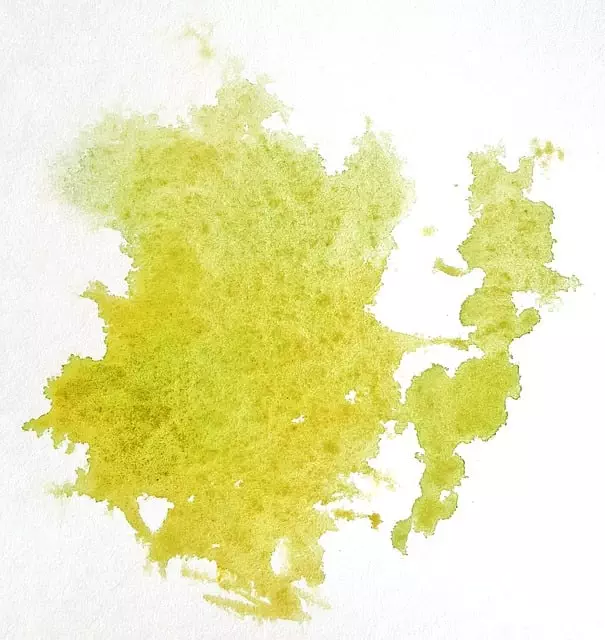Understanding grout stain causes—from liquid spills to hard water and mold—is key for effective removal in kitchens and bathrooms. Begin with safety precautions, testing cleaning agents, and natural remedies like baking soda and vinegar pastes. For persistent stains, professionals offer advanced tools and chemicals. Regular cleaning, sealing, and mild detergent use prevent future stains.
“Unraveling the art of stain-free grout in your kitchen and bathroom, this comprehensive guide offers a detailed roadmap for tackling stubborn stains. From deciphering the causes behind discolored grout lines to exploring potent yet safe cleaning solutions, we equip you with the knowledge needed to tackle the task effectively. Learn about natural remedies for deep cleansing, crucial safety precautions, and expert tips for prevention. Discover when professional assistance is the best course of action and embrace a fresh, stain-free space.”
Understanding Grout Stain Causes

Understanding the causes of grout stains is the first step in effectively removing them, especially in high-moisture areas like kitchens and bathrooms. Grout lines, with their narrow crevices, are prone to trapping moisture, food particles, and other debris, leading to unsightly stains over time. These stains can result from various factors, such as spilled liquids (including tea, coffee, or juice), hard water minerals, mold and mildew growth, and even the type of grout material used.
When removing stains from grout lines, it’s essential to identify the specific cause. For instance, hard water stains might require a different approach than organic spills or mold. Regular cleaning with mild detergents can help prevent some stains, but more persistent issues may demand the use of specialized grout cleaners or natural remedies like baking soda and vinegar blends.
Safety Precautions Before Starting

Before tackling any stain removal project, especially in high-moisture areas like kitchens and bathrooms, safety should be your top priority. Always wear protective gear, including gloves, to prevent direct contact with chemicals. This is crucial when handling grout cleaning solutions as some products can be harsh and may cause skin irritation. Ensure proper ventilation in the room to avoid inhaling any fumes from cleaning agents. Additionally, test any chosen stain remover on a small, inconspicuous area first to check for potential damage or discolouration. Knowing what’s safe and effective is key to removing stains from grout lines without causing further issues.
Effective Cleaning Solutions

When it comes to removing grout stains, especially in kitchens and bathrooms, there are several effective cleaning solutions that can transform your tiles back to their pristine condition. One of the most common and accessible options is using a mixture of baking soda and vinegar. This natural cleaning agent is powerful yet gentle on surfaces, making it ideal for sensitive grout lines. You simply mix equal parts of baking soda and white vinegar to create a paste, apply it to the stained areas, let it sit for 15-20 minutes, then scrub gently with a soft brush or cloth before rinsing thoroughly.
For tougher stains that resist these basic solutions, you might need to turn to specialized grout cleaners available in the market. These products are designed specifically to dissolve mineral deposits and organic compounds that cause discolouration. Follow the instructions on the packaging for best results, but typically, you’ll apply the cleaner to the grout lines, let it soak, then scrub away the dirt and grime with a grout brush or old toothbrush. Regular cleaning and sealing of grout lines can prevent future stains from setting in, ensuring your kitchen or bathroom stays looking fresh and inviting.
Step-by-Step Guide to Removing Stains

Removing stains from grout lines in kitchens and bathrooms can be a straightforward process if approached systematically. Start by gathering your tools: a mixture of baking soda and water, a soft-bristled brush or sponge, and an old cloth or rag. Begin by gently scrubbing the stained area with the brush or sponge, applying the baking soda paste. This natural cleaner effectively lifts stains without damaging the grout.
Next, use the damp cloth to wipe away the residue, rinsing as needed. For tougher stains, consider using a mild vinegar solution instead of water for better results. Always test any cleaning agent in an inconspicuous area first to ensure it won’t discolor or damage the grout.
Natural Home Remedies for Deep Cleansing

Removing stains from grout lines can be a challenging task, but natural home remedies offer an effective and eco-friendly solution. Baking soda is a popular choice due to its abrasive yet gentle properties. Creating a paste with baking soda and water, applied directly onto the stain, can help lift dirt and grime without damaging the grout. This simple mixture can be left on for 15-20 minutes before scrubbing gently with a soft brush or cloth, revealing cleaner lines.
Another natural option is vinegar, known for its acidity which helps dissolve mineral deposits and calcium build-up commonly causing grout discolouration. Combining equal parts white vinegar and water in a spray bottle allows for easy application to the affected areas. Let it sit for 10 minutes, then scrub with a damp cloth or sponge. This method is particularly effective for removing stubborn tea, coffee, or mineral stains from grout lines in kitchens and bathrooms.
When to Consider Professional Help

If you’ve tried home remedies and over-the-counter products, but the grout stains in your kitchen or bathroom still refuse to budge, it might be time to consider professional help. Grout stain removal can be a challenging task due to the porous nature of grout, which allows stains to penetrate deep into its structure. Professional cleaners have access to advanced tools and chemicals designed specifically for tackling tough grout stains.
They also possess the expertise and experience needed to navigate the intricate nooks and crannies of your tiling, ensuring that every stain is removed effectively without causing damage to the grout or tiles. This level of specialized knowledge and equipment can make all the difference in achieving a sparkling clean appearance for your grout lines—a result that may be harder to attain on your own.
Maintaining Grout Lines for Future Prevention

Maintaining grout lines between tiles is an essential step in preventing future stain removal. Regular cleaning with a soft brush and mild detergent can keep grout lines free from dirt, grease, and other debris that cause staining. This simple, preventive measure not only preserves the aesthetic appeal of your kitchen or bathroom but also makes future stain removal easier.
Additionally, sealing grout lines after cleaning can provide an extra layer of protection against stains. Grout sealers create a protective barrier, filling in pores and preventing liquid from penetrating the grout, which significantly reduces the chances of staining. Regular reapplication of sealer is recommended, especially in high-traffic areas or spaces prone to spills.



